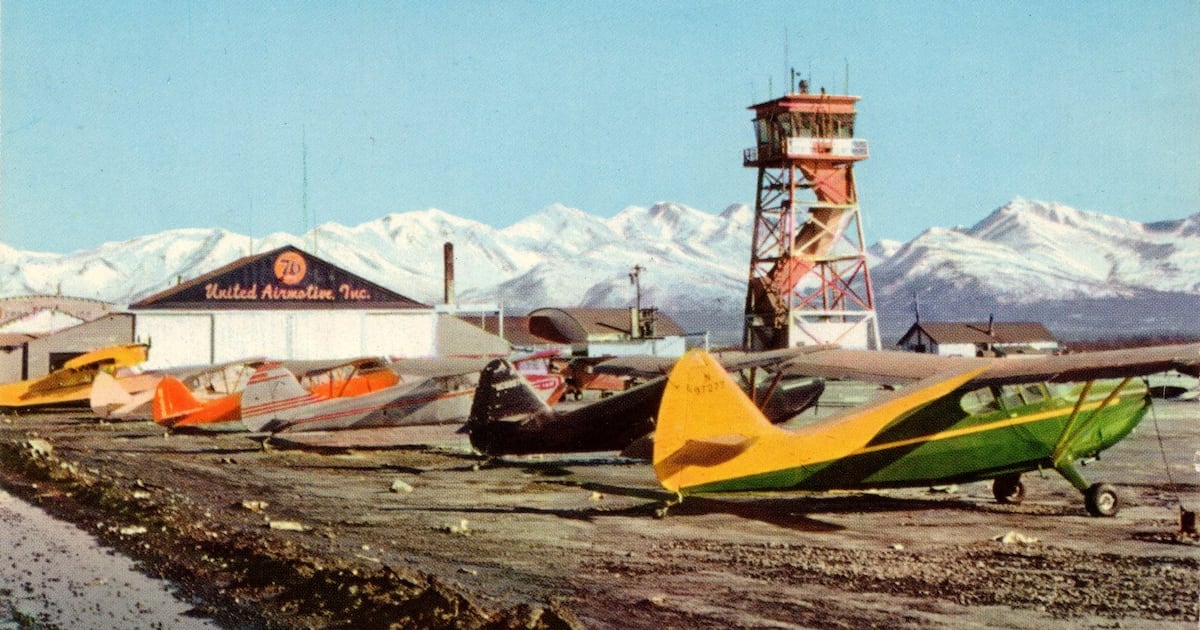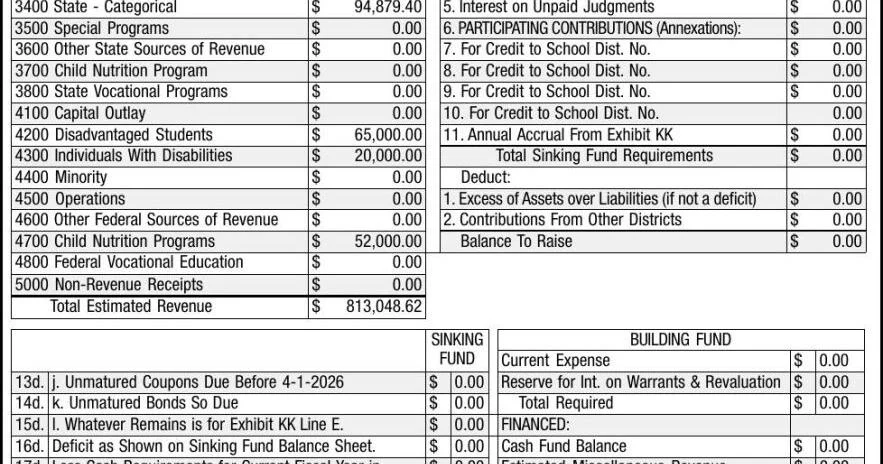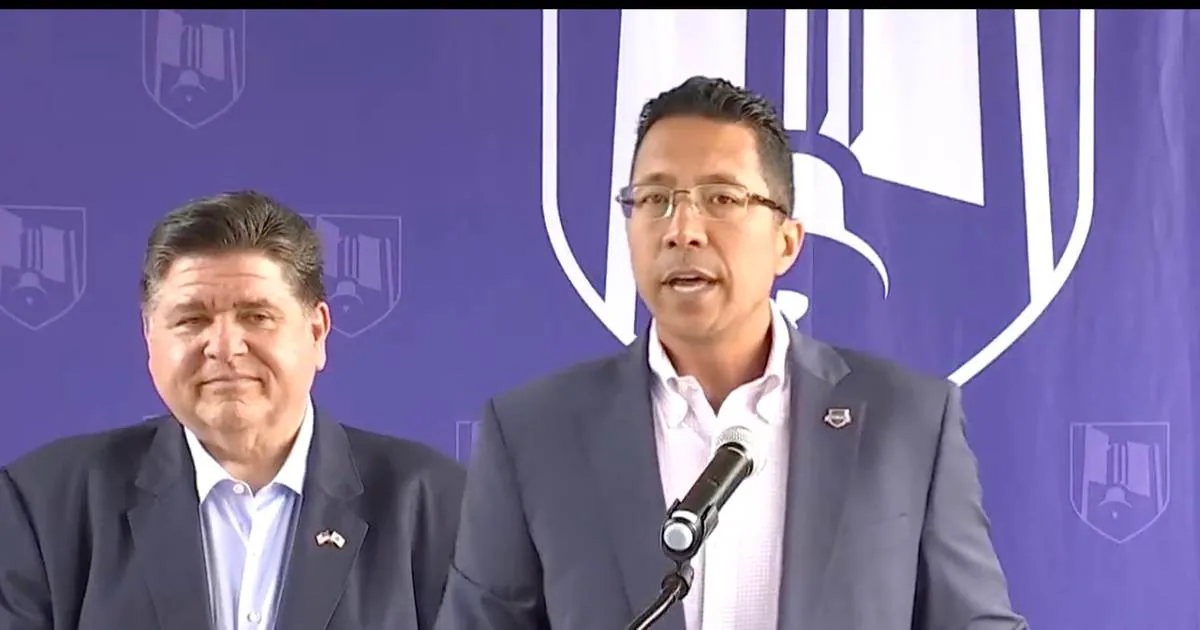
Part of a continuing weekly series on Alaska history by local historian David Reamer. Have a question about Anchorage or Alaska history or an idea for a future article? Go to the form at the bottom of this story.
It’s that time of year.
From a photo caption in the Sept. 25 Anchorage Daily News e-edition, “Termination dust signals change is in the air” due to a “dusting of snow on Chugach Mountain peaks.”
Anthony Wright explained, “Termination dust is an Alaskan term for the first light snow that coats mountain peaks, marking the end of summer and the approach of winter” in a Sept. 24 Your Alaska Link article.
Per Wiktionary, the dictionary sister site to Wikipedia, termination dust is “a light, high-altitude snowfall that indicates the end of summer.”
These recent mentions of termination dust illustrate the prevalent local understanding of the term, as reflected in the annual flood of posts on every social media platform, from residents young and old. The “termination” is symbolic, the changing of the seasons. Meanwhile, the “dust” is literal, the first sprinkling of snow atop the surrounding mountains.
Naturally, there are contrarians, particularly about the amount of snow necessary for a seasonal termination. Imagine if you can a world where all Alaskans agree on a topic! And others despise the idiom in all forms. Nobody is necessarily wrong, but usage defines meaning. How we use words, phrases and slang matters more than any prescribed definition. When it comes to language, prescriptivists always, eventually lose. There is value in formality and traditions, in that they foster consistent methods of communication. Yet, there comes an end to all things. Sic transit gloria mundi: thus passes the glory of the world.
For all that, the history and evolution of termination dust as a turn of phrase offers education, enlightenment and entertainment. Over the decades, there have been changes in meaning and connotation. Throughout those years, it remains a significant detail of local history, a widely recognizable bit of slang whose lore maps closely against that of the town itself.
In 1932, Illinois reporter Robert “Bob” Atwood (1907-1997) married Evangeline Rasmuson, of those Alaska Rasmusons. More specifically, her father was Edward Rasmuson, then president of the Bank of Alaska. Seduced by a hefty loan from his father-in-law, Bob moved his family in 1935 to Anchorage, where he purchased and operated what was then the small town’s only newspaper, the Anchorage Daily Times. As Anchorage rose to prominence in the 1940s, Atwood likewise ascended in influence. He was a prominent advocate for statehood and, for decades, one of the state’s most powerful individuals. In short, he wound up knowing quite a bit about Alaska.
Across the years, Atwood consistently attributed “termination dust” to Ken Sheppard (1906-1995), an East Coast kid who wound up stationed around Alaska during World War II, including at Fort Richardson in Anchorage. After the war and a brief stint in New York, Sheppard returned to Anchorage, where he managed a concrete company, served as president of the chamber of commerce and became a recognizable, serious figure about town. In 1976, Atwood wrote, “The first time we heard of it was one October when Ken Sheppard pointed to the Chugach Mountains east of Anchorage and said, ‘Termination dust is here.’”
From a 1969 Daily Times editorial, “Our notebook attributes the name to Kenneth Sheppard.” The article continued, “The name has stuck through some 20 years and appears to be here to stay.” Twenty years prior meant 1949 or so, convincingly matching when Sheppard moved back to Anchorage and the first usage in the Daily Times. From a Nov. 3, 1949, article, “’Snowflake fever,’ like the Midwest term ‘termination dust,’ is applied to end-season fear which results in a desire to quit prematurely. It is usually applied to construction work.” So, those modern locals weary of the term can always use the historical synonym: snowflake fever.
In the previous quote, note the given “Midwest term” origin. Sheppard was not Midwestern, a New Jersey lad born and raised. A review of multiple newspaper and book archives found no references to snow as termination dust across the country before the term became associated with Alaska. Nonetheless, Atwood is the only source attributing the idiom’s origin to Sheppard, warranting a respectful amount of skepticism.
Termination dust always indicated a changing of seasons, but the phrase originally possessed a stricter meaning, as in the end of construction season. From 1940 to 1950, Anchorage exploded in population, from around 4,000 people in the area to 32,000 by the decade’s end, prompted by the opening of Fort Richardson in 1940. That demographic boom meant a construction boom as well, homes and businesses and infrastructure for those thousands of new residents. However, the climate, logistic and technological limitations of the era meant construction season lasted only around five months in Anchorage — less in the Interior — and ended with the onset of winter. Many of the construction workers would then relocate to the Lower 48, to their primary homes or continued employment opportunities. Snowfall, therefore, was the signal to start packing.
Given that annual migration, it is not surprising that the earliest documented usage of “termination dust” occurs in Outside sources, from those construction workers sharing tales of that frozen north. The Oregon Journal published the oldest example I could find on Nov. 9, 1948. “Up in Alaska the workers who go there for the summer call the first snowflakes ‘termination dust.’ Time for them to terminate and get back to the States.” Ten days later, the Oregonian out of Portland included this passage in a discussion of construction woes in Alaska, “Snow up here isn’t snow. It’s ‘termination dust.’ At the first fall of this Arctic confetti the summer construction workers begin packing their bags and catching the first plane home.”
Termination thus meant the termination of work. In 1962, Anchorage resident Ruth Connolly told a newspaper in Scottsdale, Arizona: “The termination dust comes down out of the hills and stays with us until May … Termination dust is snow. We call it that because when it comes, everything green is terminated for a long, long time. Nobody up there refers to snow as snow. Termination dust, that’s what we call it.”
Moreover, “dust” once meant something more than a powdered sugar-esque sprinkling on the Chugach peaks. In a 1953, Aiken, South Carolina newspaper article, Dorothy Monahan cited the experiences of a couple who spent the summer of 1951 in Anchorage. “Each month as the snow line moves down the mountain side one can see winter creeping up on Alaska. Construction people call it termination dust and when the dust reached the valley, people leave by the hundreds each day.” Midcentury Alaska construction was a lucrative industry, and given a short construction season, it makes sense that developers and laborers alike would stretch that season for as long as possible. Leaving town with the first snowflakes, true snowflake fever, meant substantial losses in potential income.
Many of the earliest usages support a heavier snowfall interpretation, like this line from a 1956 Daily Times article: “’Termination dust’ covered the Chugach Mountains yesterday.” Or, from an Oct. 6, 1951 Daily News article, “Right now the mud may be up to your shoe tops — but you can bet your life you’ll be wading in the ‘Termination Dust’ soon.”
In this way, many of the snowfalls referenced by early termination dust usage can be understood as significant precipitation. A Sept. 9, 1952 Daily News article illustrates this distinction. It begins, “The first ‘termination dust’ was visible from Anchorage this morning as fresh snow appeared on the nearby Chugach mountains.” Without clarification, this “fresh snow” might be understood as the dusting of the highest mountaintops. However, the article continues: “Snow fell in mountains all around the Anchorage area during the night hours.”
Still, this aspect of termination dust rapidly evolved, and some usage even in the 1950s was more in line with the modern meaning, of a first visible snowfall no matter how light in effect. From an Aug. 13, 1954 Daily News article, “‘Termination dust’ — the first snow of the season fell on the Chugach mountains to the northeast of Anchorage last night, warning that the Alaskan summer is almost over.” While that anonymous author announced the arrival of termination dust, they also noted there was no snow in Anchorage proper and none expected until October. For a Sept. 20, 1958 Daily News article, Susan Stoffel stated, “But to Alaskans, the first white flakes that fell yesterday were nothing else but ‘termination dust,’ and the signal for all ‘summertime’ residents to pack up and head for their wintertime homes in the south.”
While termination dust is now primarily, though not exclusively, Anchorage slang, it was once used across Alaska, particularly in Fairbanks. From an Oct. 23, 1953 Fairbanks Daily News-Miner article, “’Termination dust,’ otherwise known as snow, was trickling from the skies in Fairbanks today and there were indications that the usual decline in employment was setting in for the winter.” On Oct. 14, 1964, News-Miner columnist Maury Smith wrote, “Termination dust, the construction people call it. Some of it fell this morning at Eielson Air Force Base and at Gilmore Creek. The weather people say Fairbanks might get some of it. And, winter is on.”
Given the migratory nature of the construction workers who birthed the phrase, it is perhaps not surprising that “termination dust” appears in Outside media, most notably in early 1950s Montana. Some of the same laborers who spent summers in booming Anchorage ended up in Montana working on various projects. From a 1951 article in the Whitefish Pilot, “Termination dust is drifted white at Hungry Horse now … Ordinary folk call it simply snow, but construction workers have a language of their own. Drifts of termination dust are a signal to them to get out of town because the job will fold up pretty soon, not to resume until good weather comes again in the spring.” The Hungry Horse Dam in northwest Montana was completed in 1953.
From a 1952 Portsmouth, Virginia newspaper article about progress on that dam, “Do you know what ‘termination dust’ is? It is snow. That’s what the engineers and workmen call it in Montana where they are building the world’s third highest and fourth largest dam.” And from a 1953 article in the Liberty County Times, in northcentral Montana, “The termination dust was in the air of last week, and as the remark went around, a traffic cop was almost needed at the top of the hill to unsnarl the trailer traffic as they left Tiber.” Construction on the Tiber Dam ran from 1952 to 1956.
Even as the idiom proliferated, the context that sparked its creation was eroding. The population boom of the 1940s caused a severe housing shortage, hence the accompanying boom in construction. And so, for several years, Anchorage lacked enough long-term housing for the laborers to remain through the winter. Eventually, construction caught up to demand, at least to some extent. From a 1954 Daily News editorial, “Adequate housing in the main centers of population has also added to the attractiveness of making one’s home in Alaska … Gone are the days when ‘termination dust’ sent hundreds and even thousands of workers scurrying for the outside only to come back, many of them at government or contractor’s expense in the spring.”
In addition, methodological and technical advancements extended the building season. On Feb. 1, 1957, a fire gutted the Carrs grocery store on Gambell Street. None of the stock or fixtures were salvageable, resulting in an estimated $500,000 loss ($5.85 million in 2025 money). Only 54 working days later, the store reopened, reportedly the first concrete building constructed during an Anchorage winter. In late September 1960, Daily Times columnist Bob Kederick declared termination dust was an “obsolete term” given multiple ongoing construction projects across town. “Anchorage stays busy,” he wrote, “despite the timid appearance on the mountains of what once meant the end of construction.”
Still, the term survived a few more years with the construction connotation intact. Robert Bowen’s 1965 book “An Alaska Dictionary” was the first serious attempt to gather Alaska slang into a single text. He defined termination dust as “The first snow, which marks the end of the construction season and the termination of the job.” He also compared it to a rarer bit of Alaska lore, the rotation dust. Per Bowen, rotation dust was “Snow on the Chugach massif, which begins to appear at about the season that Air Force personnel used to be rotated back to the South 48.”
Howard Weaver, the two-time Pulitzer-winning Anchorage journalist, once wrote a sort of farewell anecdote for the older meaning of termination dust. From a 1977 Alaska Advocate article, “I saw now on the Chugach Mountains last week and thought, ‘There’s the termination dust,’ Billy said. Then I thought, ‘Hell, it’s not termination dust any more. Nobody terminates and heads South for the winter these days. They’re all staying right here.’”
By the late 1960s, the popular meaning of termination dust had largely simplified into its modern understanding. Along that same path, the once relatively profound cultural observation more frequently became the subject of jokes and folksy spins. Tay Thomas, in her 1969 book “Only in Alaska,” wrote, “Today, in this modern age of technology, we still call the first signs of snow Termination Dust, but now, instead of thinking about leaving or holing in for the winter, we suddenly remember all the routine chores we should complete before the snow reaches the city.” She added, “In other words, if David has left his football or camping gear out in the backyard, there they will remain for a good six months.”
More whimsically, she noted, “It is the road and utilities-maintenance people who really panic at the first sign of Termination Dust. They rush all their heavy equipment to every part of the city at once, and then the fun begins. We never know from one day to the next which major street will be closed off … Every fall, some irate driver comes up with the inevitable story: ‘I was driving down Spenard Road, discovered it was blocked, turned to go back, and darned if they didn’t block off the other end, too!’”
Kurt Kosters’ 1978 book “How to Talk Alaskan” defined termination dust as “That cold, white stuff floating in the air, telling you it’s high time to go looking for a sunnier clime. Little kids call it snow and think it’s lots of fun. Little kids don’t know very much.”
Poet Leslie J. Klebesadel included “Termination Dust” in his 1989 collection “Observations on This ‘n’ That by Old Al Aska.” It concludes:
If I wuz a leetle squirrel
I’d be “stashin’ nuts away”
Gittin’ ready fer to curl
In a hollow tree till May
But instead I got to hustle
Choppin’ wood an’ chinkin’ logs,
An’ I’ve also got to rustle
Winter grub fer me an’ the dogs.
Yep, the summer’s almost history
There’s no time to sit an’ rust.
The reason ain’t no mystery.
We’ve seen TERMINATION DUST!
Humorist and politician Mike Doogan did not include termination dust in his 1993 text, “How to Speak Alaskan.” But his discussion of “Three seasons” feels relevant. “Three seasons — Alaska only has three: winter, breakup, and road construction. Some people think even that’s bragging, that the state has only two: mosquitoes and no mosquitoes.”
As the years passed, more and more, the usage of termination dust with a construction context became increasingly rare, usually as accompanied by historical commentary to indicate how things once were. From Joe McGinniss’ 1980 travelogue “Going to Extremes,” “Soon the first faint traces of snow would be visible atop the mountains to the east. Termination dust, it was called. Time for seasonal employees to collect their final paychecks and go home.”
Retired English professor Russell Tabbert provided an appropriately scholarly account of “termination dust” in his 1991 “Dictionary of Alaskan English,” supported by references dating back to 1957. “An Anchorage area term for the end-of-summer snows which fall on the surrounding mountains and hills, signaling that the traditional construction season is about over and that workers will be terminated soon.”
Doogan did cover termination dust in his long-running Daily News column. His Oct. 7, 1997 article declared, “Not so long ago, calling the first snowfall termination dust was more than a cliché. Its arrival meant the certain termination of the construction that drove the economy of smaller Anchorage … This Anchorage is not that Anchorage. Construction often goes on all winter.”
In 1998, Municipality of Anchorage planner Kevin Waring offered an interpretation of termination dust wrought with finality. “Termination dust doesn’t mean anything anymore,” he declared. “It doesn’t mean you pack your bags and go where you came from. It means you put on a sweater.”
Of course, Waring was not exactly right. Termination dust means a lot to the people of Anchorage. That’s why, every year around this time, we all take our turn at announcing its arrival, me included. Or we argue about the details. Either way, termination dust is a rare monolithic touchstone in the local culture. The passage of time is universal, as are the basic indications of change. To quote Henry Wadsworth Longfellow, “Art is long, and Time is fleeting, And our hearts, though stout and brave, Still, like muffled drums, are beating Funeral marches to the grave.” Or, perhaps the true meaning of termination dust is the friends we made along the way.
My special thanks to Royce Williams who suggested this topic just as I was trying to find something to write about.
[Wine, dogs, death and noble insubordination: The unauthorized 1945 rescue of a crashed Army flight crew]
[When Anchorage didn’t even know its own city limits: A 1946 Government Hill story]
[The tale of the crooked marshal: Why did crime, especially vice, flourish in territorial Alaska?]



